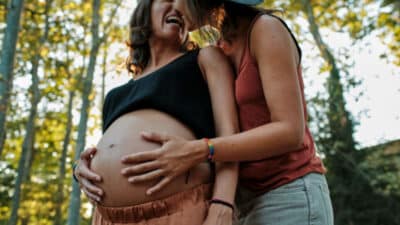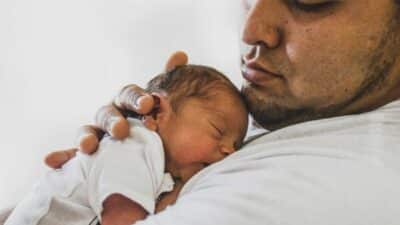Social freezing: success rates
What is the ideal age to have my eggs frozen?
This is a question women often ask in the context of social freezing. A simplified answer to this would be that it is generally better to do it at a younger age than at a later age.
However, it is not quite that simple. Both the quantity (“egg reserve”) and the quality of the eggs do not develop linearly with age. In order to better understand the likelihood of success with social freezing, it is worth recalling the procedure: After hormonal stimulation of the ovaries, the eggs are removed and then frozen at minus 196 degrees Celsius. Accordingly, there are two essential steps in this process that determine the subsequent probability of success of a pregnancy from cryopreserved eggs: 1. the retrieval and 2. the freezing of the eggs.
Social Freezing: How many eggs are necessary?
If 20 mature eggs are retrieved from a 34-year-old woman, there is a 90% chance of at least one birth.
One of the most important statistical success factors is the age of the patient at the time of egg retrieval. This is due to the fact that the quality of the eggs decreases with increasing age — in medical terms, this is referred to as the “euploidy of the cell organisms”.
In addition, the natural egg reserve decreases with increasing age, which is why more cycles are then needed to retrieve the same number of eggs. A critical age in terms of oocyte reserve is often considered to be around the ago of 35, as from this point onwards the rate of natural births decreases disproportionately [1]. In general, it is recommended to retrieve at least 10–20 eggs for social freezing. According to a 2017 study of 520 ICSI cycles, women aged 34, 37 and 42 have a 90%, 75% and 37% chance of at least one successful live birth with 20 frozen eggs, respectively. A 20-year-old woman even has a 94% probability with 20 frozen eggs [1].
CHANCE OF 2 LIVE BIRTHS THROUGH SOCIAL FREEZING AT 34 YEARS STILL RELATIVELY HIGH
The case when patients wish to have several births based on the frozen eggs can be considered similarly. Again assuming 20 frozen eggs are retrieved, a 34-year-old woman has a 66% chance of having at least 2 births. For a 42-year-old woman, on the other hand, the chance is only 7% [1].
If at least three births are to be achieved, the probability of the 34-year-old woman decreases to 38% and the probability of the 42-year-old is about 1% [1].
Overall, a clear correlation can be demonstrated between the age at the time of egg collection and the probability of success of a subsequent pregnancy from social freezing. Of course, it should be noted that these are statistical mean values, which in practice vary from person to person. Similarly, regardless of age, there is no guarantee of success with social freezing for a subsequent pregnancy.
Social Freezing: Methods of freezing
About 92% of eggs frozen with vitrification survive.
There are further differences in success rates due to the method of freezing the eggs. A distinction is made here between so-called “slow freezing” and vitrification. The two methods differ primarily in the speed at which the eggs are frozen.
In slow freezing, the retrieved oocytes are cooled by about 2 — 3 degrees Celsius per minute over a longer period of time until they reach the required minus 196 degrees Celsius. This low final temperature is necessary to stop the biological processes in the oocytes and make long storage possible without the loss of quality.
In vitrification (also called “flash freezing”), the eggs are immersed in liquid nitrogen, which allows them to be frozen at minus 196 degrees Celsius within minutes. For egg freezing, speed is a crucial success factor: eggs largely consist of water, which is why it is important to prevent crystallisation of the liquid during freezing. Accordingly, vitrification is clearly the more promising method, which is why it has become widely accepted in recent years [2].
In summary, the age of the woman, which is ideally below 35 years, in combination with the method of freezing (vitrification) are decisive factors for increasing the probability of success of a subsequent pregnancy through social freezing.
About Fertilly
At Fertilly, we have made it our mission to accompany couples (homosexual and heterosexual) and singles on the way to fulfilling their child wish. In doing so, it is important to us to create transparency in the area of fertility services, to provide information and knowledge on the topics of pregnancy and fertility and to help you to find the most suitable Fertility Center. Through cooperation with first-class Fertility Centres and clinics in Europe, enquiries about Fertilly are given preferential treatment. This means that our patients avoid the usually long waiting times and get appointments more quickly.
If you would like more information about Fertility Centers, success rates and prices, please contact us using this questionnaire. We will advise you free of charge and without any obligation.
-
Answer the first questions in the online form in order to book an appointment. This way we can better address your needs during the conversation.
-
We will find the best contact person for your individual needs. Schedule 20 minutes for the consultation.
-
We will introduce you to the right fertility clinic from our network, make an appointment and accompany you until your wish for a child is fulfilled.
Sources:
1. Goldman RH, e. (2017): Predicting the likelihood ofl ive birth for elective oocyte cryopreservation: a counseling tool for physicians and patients. — PubMed — NCBI. Retrieved from https://www.ncbi.nlm.nih.gov/pubmed/28166330
2. Cobo, A., García-Velasco, J., Coello, A., Domingo, J.,Pellicer, A., & Remohí, J. (2016): Oocyte vitrification as an efficient option for elective fertility preservation. — PubMed — NCBI. Retrieved from https://www.ncbi.nlm.nih.gov/pubmed/26688429









